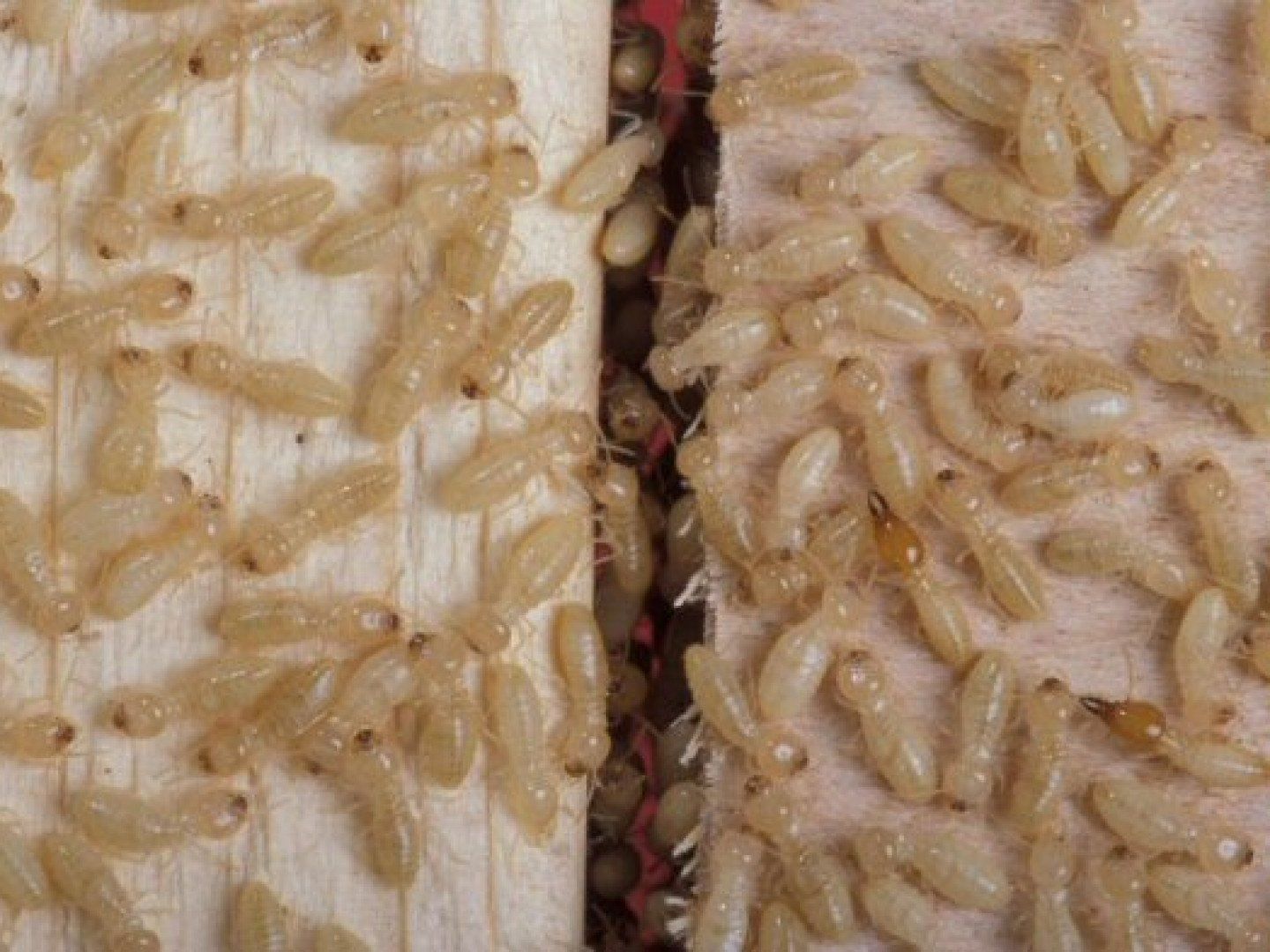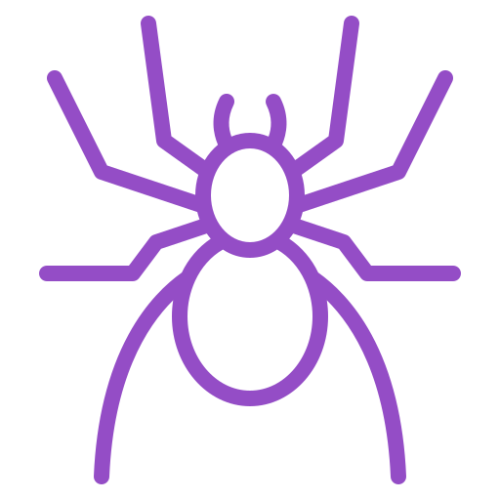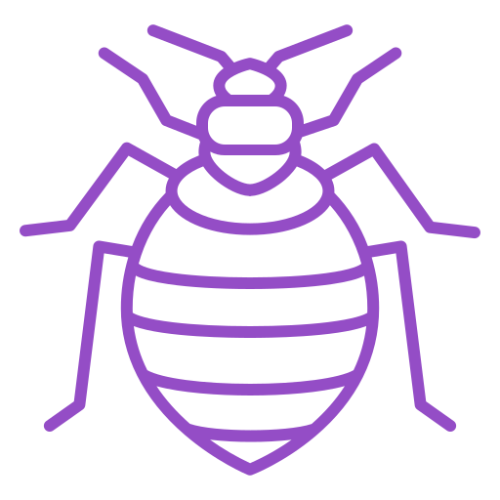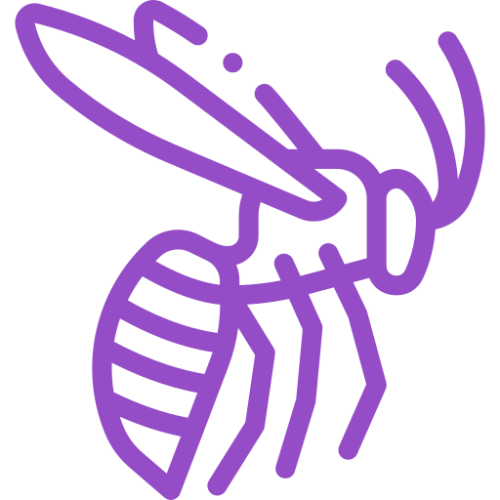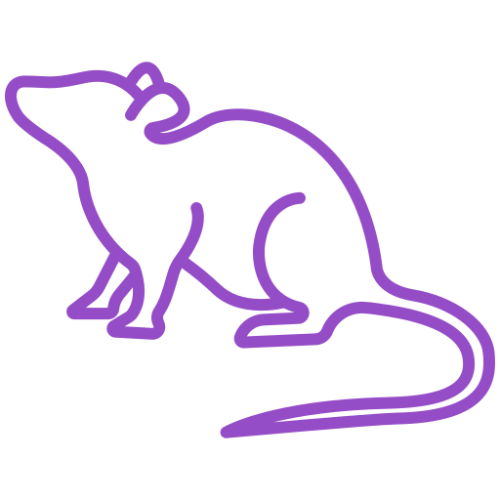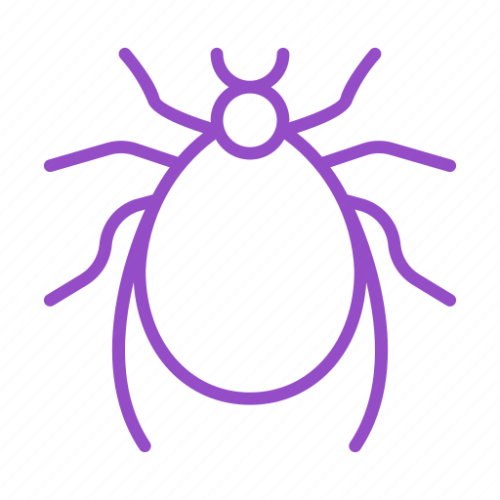Termite Control and Exterminator Service
The Best Termite Exterminator And Termite Control Services Near Me!
Our small business values customer satisfaction, and we strive to offer a unique and personalized experience. At
SmartGreen, we understand the importance of effective termite control, and our expert team is committed to delivering top-notch services with a focus on environmentally friendly solutions. Trust us to change the narrative around pest control – experience the difference with SmartGreen Pest and Mosquito Control.
Contact us today for a free inspection and enjoy the peace of mind that comes with our reliable and eco-conscious termite control services.
We Provide Termite Control and The Following Services:
SmartGreen Pest and Mosquito Control is dedicated to exterminating and preventing pest infestations on your property. Our services eradicate the most common and even uncommon pest types. You can count on us for:
Trust SmartGreen Pest and Mosquito Control exterminators in Woodstock, Kennesaw, GA and surrounding areas to get rid of all types of insects around your property. Call (404) 937-7088 today to request eco friendly pest control at your home or office.
Take the Steps Necessary to Protect Your Home From Termites
Termites cause more than $5 billion worth of damage each year in the U.S., and the damage isn't covered by most homeowner's insurance policies. Since termites are found throughout the greater Atlanta, Georgia area, you could be at risk of a termite infestation.
Spring is prime termite season. That's when swarms emerge to mate and establish new colonies, even in your home. Termites can eat a home out from under you, the homeowner, often without you knowing about it until the damage has been done. Termites can chew through wood, flooring and wallpaper 24 hours a day, and compromise the
structural integrity of your home.
Understanding Termites: Biology, Behavior, and Identification
Termites are social insects that belong to the order Isoptera. To effectively control and prevent termite infestations, it is crucial to understand their biology, behavior, and be able to identify them accurately.
Biology of Termites
- Termite Species: There are different species of termites, including subterranean termites, drywood termites, and dampwood termites. Each species has distinct characteristics and behaviors.
- Termite Castes: Termites live in highly organized colonies consisting of different castes, each with specific roles. The castes include the reproductive king and queen, soldiers, workers, and supplementary reproductives.
- Termite Life Cycle: Understanding the life cycle of termites is essential for effective control. It typically involves egg laying, nymph stages, molting, and development into different castes.
Behavior of Termites
- Social Structure: Termites exhibit advanced social behavior, living and working together in large colonies. They communicate through pheromones and perform various tasks to ensure the survival and growth of the colony.
- Feeding Habits: Termites are primarily detritivores, feeding on cellulose-rich materials like wood and plant debris. Some species also have a symbiotic relationship with microorganisms that help them digest cellulose.
- Nesting Behavior: Termites construct elaborate nests to live in. Subterranean termites build underground nests, while drywood termites infest wooden structures directly.
Identifying Termites
- Physical Characteristics: Termites have distinct features such as soft bodies, straight antennae, and straight-sided waists. Winged termites (alates) have four wings of equal size.
- Termite Swarmers: During certain times of the year, termite colonies produce swarmers that are winged reproductive termites. Recognizing swarmers can be an indication of an established termite colony nearby.
- Termite Damage: Identifying the signs of termite damage, such as hollow-sounding wood, mud tubes, frass (termite droppings), and discarded wings, can help identify a termite infestation.
By understanding the biology, behavior, and identification of termites, homeowners can become more proactive in termite control and take appropriate measures to protect their homes from these destructive pests.
Signs of Termite Infestation
Termites can cause significant damage to structures before their presence is even noticed. It is crucial to be aware of the signs that indicate a termite infestation in order to take prompt action. In this section, we will explore the various signs of termite infestation that homeowners should be vigilant about.
Physical Signs of Termites
- Mud Tubes: Subterranean termites construct mud tubes, which are pencil-sized tunnels made of soil and saliva, to protect themselves while traveling from their nest to a food source. These tubes can be found along the foundation, walls, or other wooden structures.
- Swarming Termites: Termite colonies produce winged reproductive termites called swarmers. If you observe a swarm of termites flying around your property or find discarded wings near windowsills or light fixtures, it indicates the presence of a mature termite colony nearby.
- Termite Frass: As termites consume wood, they produce wood-colored droppings known as frass. Finding small piles of frass resembling sawdust or pellets near wooden structures can be a sign of termite infestation.
Structural Damage Indicative of Termites
- Wood Damage: Termites hollow out the wood from the inside, leaving a thin veneer of wood or paint on the surface. Tap on suspected areas to check for hollow sounds, or examine wooden structures for blistering or peeling paint.
- Sagging Floors or Ceilings: Extensive termite damage can weaken the structural integrity of floors or ceilings, causing them to sag or feel uneven.
- Warped Doors or Windows: Termite activity can cause doors or windows to become difficult to open or close properly due to the damage they cause to the surrounding wooden frames.
Other Indications of a Termite Presence
- Discarded Wings: After a termite swarm, you may find discarded wings near windowsills, doorways, or other light sources. These wings are shed by swarmers as they establish new colonies.
- Presence of Termite Mud in Soil: Subterranean termites build their nests in the soil. If you notice small mounds or tubes made of mud in the soil around your property, it could indicate an underground termite infestation.
- Noises in the Walls: Some homeowners report hearing clicking sounds or rustling noises coming from within walls. This can be a result of termites tunneling and feeding on wood.
By being attentive to these signs, homeowners can identify a termite infestation early on and take the necessary steps to control and eradicate the termites before they cause extensive damage to their property.
Preventive Measures Against Termites
Taking proactive measures to prevent termite infestations is crucial in safeguarding your home and property. By implementing preventive measures, you can create an environment that is less attractive to termites and reduce the risk of an infestation. In this section, we will explore various preventive measures that homeowners can take to protect their homes from termites.
Reducing Moisture Around the Home
- Fixing Leaks: Repair any leaking pipes, faucets, or plumbing fixtures as soon as possible. Termites are attracted to moisture, and fixing leaks will help reduce their attraction to your property.
- Proper Drainage: Ensure that your property has proper drainage systems in place to redirect water away from the foundation. This will prevent water from pooling near the structure, which can create a conducive environment for termites.
- Gutters and Downspouts: Clean and maintain your gutters regularly to prevent clogs and ensure that downspouts direct water away from the foundation. This will help reduce excess moisture around the structure.
Using Termite-Resistant Wood
- Selecting Treated Wood: When building or renovating, choose termite-resistant or pressure-treated wood for construction materials. These types of wood have been treated with chemicals that deter termites from infesting them.
- Avoiding Contact with Soil: Keep wooden structures, such as decks or fences, elevated and away from direct contact with soil. This prevents termites from easily accessing the wood and building their nests.
- Using Mulch Alternatives: If using mulch in your landscaping, consider using non-organic materials like rubber mulch or gravel instead of wood-based mulch. This reduces the availability of cellulose, which termites feed on.
Implementing Termite Barriers
- Physical Barriers: Install physical barriers, such as stainless steel mesh or sand barriers, during construction to prevent termites from entering the structure through gaps or cracks in the foundation.
- Chemical Barriers: Apply termite repellent or termiticide treatments to the soil surrounding the foundation. These chemical barriers create a zone of protection that deters termites from approaching the structure.
Regular Inspections
- Professional Inspections: Schedule regular termite inspections by a qualified pest control professional. They can identify early signs of termite activity and provide necessary treatments or preventive measures.
- Self-Inspections: Conduct regular visual inspections of your property, paying attention to areas where termites are likely to infest, such as wooden structures, crawl spaces, and basements.
By implementing these preventive measures, homeowners can significantly reduce the risk of termite infestations and protect their homes from potential damage. It is important to be proactive and consistently maintain these preventative practices to ensure long-term termite control.
Termite Treatment Options
When faced with a termite infestation, it is essential to take swift action to control and eliminate these destructive pests. In this section, we will explore various termite treatment options available to homeowners. These options range from chemical treatments to non-chemical alternatives, as well as the option of seeking professional pest control services.
Chemical Treatments
- Liquid Termiticides: Liquid termiticides are one of the most common and effective methods for termite control. They are applied to the soil around the perimeter of the structure or directly injected into infested wood. These termiticides create a barrier that kills termites upon contact or as they pass through the treated area.
- Termite Baits: Termite baiting systems involve placing bait stations around the property. These stations contain cellulose-based materials laced with slow-acting toxicants. Termites feed on the bait and carry the toxic substance back to the colony, eventually eliminating the entire colony.
- Foam Treatments: Foam termiticides are used to treat specific areas, such as wall voids or voids in the foundation. The foam expands to reach inaccessible areas, effectively eliminating termites that may be hidden within the structure.
Non-Chemical Treatments
- Heat Treatment: Heat treatments involve raising the temperature of the infested area to a level that is lethal to termites. This method is effective in treating localized infestations and is often used for targeted treatment of furniture or wooden objects.
- Freezing Treatment: Freezing treatment, also known as cryonite treatment, uses extremely low temperatures to kill termites. Liquid nitrogen is applied to the infested area, freezing and eliminating the termites.
- Electrocution: Electrocution treatments involve using specialized devices that deliver electric shocks to termites, effectively killing them. This method is particularly useful for localized infestations or hard-to-reach areas.
Professional Pest Control Services
- Termite Fumigation: Fumigation is a highly effective method for treating severe termite infestations. The structure is covered with a tent, and a powerful fumigant gas is released, penetrating all areas and eliminating termites.
- Integrated Pest Management (IPM): IPM is an approach that combines multiple treatment methods and preventive measures to effectively control termite infestations. It involves a thorough inspection, identification of the infestation source, and targeted treatments tailored to the specific situation.
- Ongoing Monitoring and Maintenance: Professional pest control services often offer ongoing monitoring and maintenance programs. These programs include regular inspections to detect early signs of termite activity and provide necessary treatments to prevent future infestations.
It is important to consider the severity of the infestation, the extent of the damage, and the specific needs of your property when deciding on the appropriate termite treatment option. Consulting with a professional pest control service can help determine the most effective treatment strategy for your situation.
Aftercare: Monitoring and Maintaining a Termite-Free Home
Successfully treating a termite infestation is just the beginning of ensuring a termite-free home. Aftercare is crucial to monitor the effectiveness of the treatment and maintain a termite-free environment. In this section, we will explore the importance of ongoing monitoring, preventive measures, and regular maintenance to sustain a termite-free home.
Regular Inspections
- Self-Inspections: Conduct regular visual inspections of your property, focusing on areas susceptible to termite infestation, such as wooden structures, crawl spaces, and basements. Look for signs of termite activity, including mud tubes, frass, or wood damage.
- Professional Inspections: Consider scheduling annual or bi-annual termite inspections by a qualified pest control professional. They can identify early signs of termite activity and provide necessary treatments or preventive measures if needed.
Moisture Control
- Maintain Proper Drainage: Ensure that your property has adequate drainage systems in place to divert water away from the foundation. Address any issues with grading or landscape design that may contribute to water accumulation or moisture problems.
- Address Leaks Promptly: Repair any leaks in plumbing fixtures, pipes, or roofs as soon as they are detected. Moisture attracts termites, so preventing and addressing water issues is crucial in termite prevention.
Wood Maintenance
- Regularly Inspect Wooden Structures: Regularly inspect wooden structures, such as decks, fences, and wooden furniture, for signs of termite damage. Promptly address any issues, such as rot or decay, that may make the wood more vulnerable to termite infestation.
- Treat Wood Surfaces: Apply protective coatings, such as sealants or paint, to wooden surfaces to create a barrier against termite infiltration. Regularly check the condition of these coatings and reapply as necessary.
Landscaping Considerations
- Distance from Structures: Maintain a sufficient distance between wooden structures, such as sheds or playsets, and the main house. This reduces the risk of termites easily accessing the main structure.
- Proper Mulch Usage: If using organic mulch in landscaping, keep it at least 6 inches away from the foundation. Consider using non-organic mulch alternatives, like rubber mulch or gravel, to reduce the attractiveness of the area to termites.
Vigilance and Prompt Action
- Educate Yourself: Stay informed about termite control strategies, new treatment methods, and preventive measures. This knowledge will empower you to take prompt action if signs of termite activity are detected.
- Promptly Address Signs of Infestation: If you notice any signs of termite activity, such as mud tubes or wood damage, take immediate action by contacting a professional pest control service. Early intervention can prevent further damage and control the infestation effectively.
By implementing ongoing monitoring, regular maintenance, and proactive preventive measures, homeowners can maintain a termite-free environment and minimize the risk of future infestations. It is important to remain vigilant and promptly address any signs of termite activity to protect your home and property.

